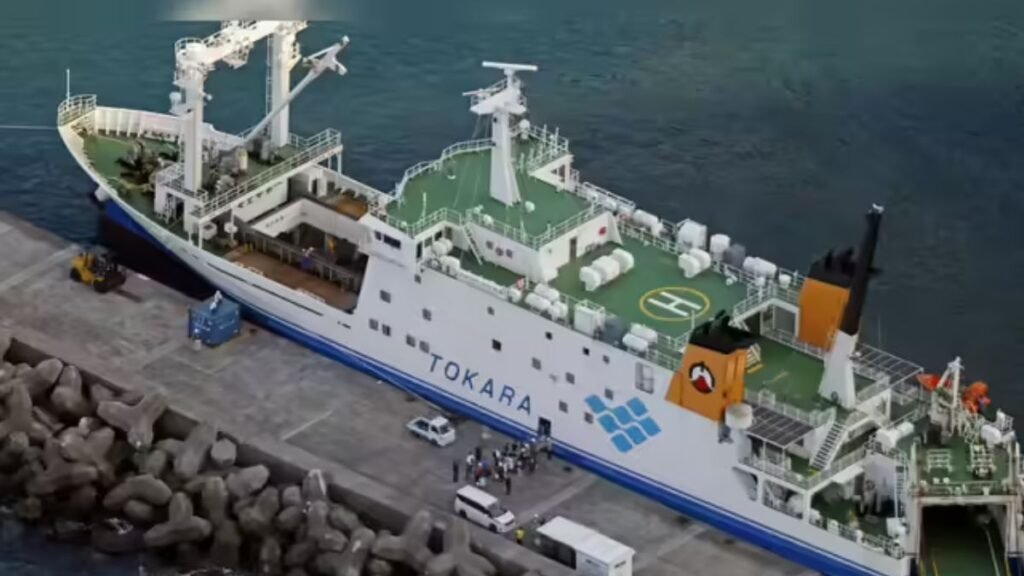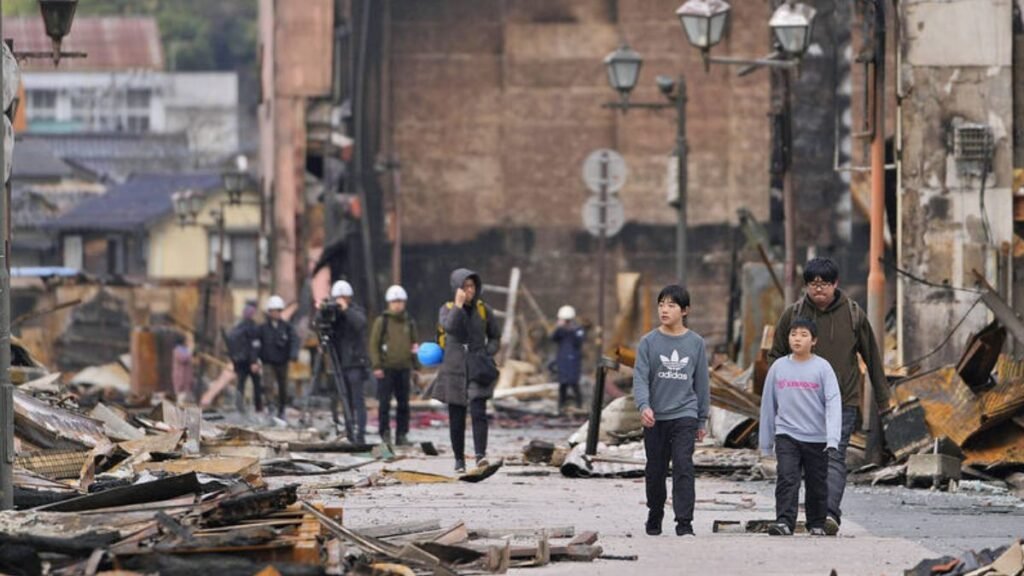In recent weeks, Japan has been rocked by an intense wave of seismic activity, particularly around the remote Tokara Islands. According to Japan’s Meteorological Agency, over 900 earthquakes have been recorded in just two weeks, leaving local communities frightened and sleep-deprived. As the nation braces for the possibility of further tremors, a surprising source of fear has taken hold – a comic book.
The manga, titled The Future I Saw, has stirred panic with its fictional prophecy warning of a massive earthquake and tsunami to strike on July 5. Although the government has dismissed the claims as speculative fiction, the situation has made headlines across international Japanese news outlets.
Unusual Seismic Activity Shakes Tokara Islands

Over 1,000 Tremors Recorded in Two Weeks
Japan’s Kagoshima Prefecture, home to the Tokara Islands, has experienced a relentless barrage of earthquakes since June 21. Residents have reported difficulty standing during some of the strongest tremors, with one islander telling regional broadcaster MBC, “It feels like it’s always shaking. It’s terrifying even to fall asleep.”
The seismic activity has prompted emergency evacuations in areas closest to the epicenter of a 5.5-magnitude quake near Kyushu’s southern tip. Although minor quakes are common in the region, the intensity and frequency of this cluster are drawing significant attention in Japan news updates.
Japan’s location along the Pacific Ring of Fire – an arc of seismic fault lines makes it one of the most earthquake-prone nations in the world. On average, the country experiences roughly 1,500 earthquakes per year. However, the current episode has stood out for its sustained duration and potential psychological impact on residents.
Scientific Community Weighs In
Ayataka Ebita, director of the Earthquake and Tsunami Monitoring Division at the Japan Meteorological Agency, addressed the growing concerns during a press conference. “With our current scientific understanding, we cannot predict the exact time or magnitude of an earthquake,” he stated. Ebita urged the public to rely on scientific data rather than fictional sources, a clear reference to the manga fueling public anxiety.
The Manga That Sparked Mass Hysteria
The Future I Saw and Its Eerie Claims
The root of this widespread panic can be traced to a manga first published in 1999 and reissued in 2021. Titled The Future I Saw, the comic was authored by Ryo Tatsuki, a former manga artist now nicknamed “the New Baba Vanga” by online fans. One panel in the book cryptically references a “huge tsunami” and a “deadly earthquake” set to occur on July 5 – the date now etched into public consciousness across Japan news cycles.
What gave the prediction credibility in the eyes of some was Tatsuki’s earlier reference to a major disaster in March 2011, coinciding with the Tōhoku earthquake and tsunami that killed over 18,000 people and triggered the Fukushima Daiichi nuclear meltdown.
The manga’s recent resurfacing on social media, especially in East Asian countries like Hong Kong, has amplified public concern and caught the attention of international media.
“I Am Not a Prophet,” Says Author
In response to the frenzy, Tatsuki’s publisher released a public statement on her behalf: “I am not a prophet. These were just speculative elements of a fictional work.” Yet despite this clarification, her comic continues to circulate as if it were a coded warning, feeding conspiracy theories and misinformed fears covered widely in Japanese news bulletins.
Government Response and Public Safety Measures
Official Reassurances
The Japanese government has moved swiftly to calm nerves. In collaboration with local emergency services, public safety announcements have been broadcast regularly, especially in earthquake-prone zones. Officials have emphasized that there is no scientific basis for predicting a massive seismic event on a specific date, including the much-feared July 5.
“We urge citizens to stay informed through official channels and not let fictional sources create unnecessary panic,” read a government advisory issued earlier this week. These messages have become a staple in both local and national Japanese news outlets as the date approaches.
Evacuation Drills and Public Preparedness
In light of the current tremor activity, several municipalities have accelerated earthquake drills and updated evacuation protocols. Shelters are being restocked, and residents in high-risk coastal zones have received refresher training on how to respond in the event of a tsunami warning.
Officials say this is not a reaction to manga predictions, but rather a proactive response to genuine seismic threats observed in recent days.
Tourism Industry Feels the Impact
Visitor Numbers from Hong Kong Drop
Despite Japan experiencing a tourism boom this year, April saw a record-breaking 3.9 million visitors—recent events have had a chilling effect on travel, particularly from Hong Kong. According to new tourism data, visitor numbers from the region declined by 11% in May compared to the same month last year.
Travel forums and social media in Hong Kong have been abuzz with discussions about the July 5 “prediction,” with many tourists reconsidering or delaying their plans. This shift has not gone unnoticed in Japanese news, as travel agencies report a growing number of cancellations or rescheduling requests.
Broader Implications for Tourism
While the overall numbers remain strong, officials are concerned about the long-term reputational damage such viral misinformation can cause. The Japan Tourism Agency has launched a new PR campaign to combat rumors, highlighting safety measures, emergency readiness, and the country’s robust infrastructure.
“We understand the anxiety, but we urge travelers to base their decisions on facts, not fear,” said an agency spokesperson, speaking to several Japanese news platforms.
Japan’s Long History of Earthquakes

Living on the Edge of the Ring of Fire
Japan’s history with earthquakes is as long as it is tragic. From the devastating 1995 Kobe quake to the life-altering events of 2011, the country has endured some of the world’s most catastrophic seismic disasters. That history has shaped not only the country’s infrastructure and emergency planning but also its cultural memory.
Because of these experiences, fictional portrayals of disasters-like those in manga and film, often strike a deeper chord. In this case, a speculative storyline has unintentionally tapped into a national trauma, making it a prominent topic in Japanese news coverage and public discourse.
Seismic Monitoring and Preparedness
Japan has one of the most advanced earthquake monitoring systems in the world. High-tech sensors are distributed across the country, and public alerts are often issued within seconds of tremor detection. These real-time notifications allow citizens to take immediate precautions, closing gas lines, seeking shelter, or evacuating if needed.
Japan’s building codes are also among the strictest globally when it comes to seismic resistance. High-rise buildings and critical infrastructure are engineered to sway with tremors, not collapse under them. While no system can guarantee total safety, these measures have significantly reduced fatalities in modern times – a fact that gets reiterated regularly in Japanese news reports.

